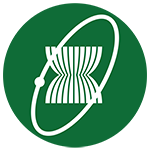THE DETERMINATION OF THE AVERAGE PATIENT SKIN DOSE AND ITS FACTORS AFFECTING IN CARDIAC CATHETERIZATION PROCEDURES
Keywords:
Patient skin dose, Cardiac catheterization proceduresAbstract
The patient dosimetry for cardiac catheterization and its factors affecting in this study were determined using Dose Area Product (DAP) method. The skin dose was calculated from DAP meter readout and information from portal film determination. Factors affecting patient dose are fluoroscopy time, patient body mass index (BMI), kVp, mAs, experience of the cardiologists, number of frames and etc. The measurement was carried out from 73 patients who underwent the cardiac catheterization procedures examination such as Diagnostic Coronary Angiography (DCA), Cardiac intervention; Percutaneous Transluminal Coronary Angioplasty (PTCA)/stent and cardiac radiofrequency ablation at King Chulalongkorn Memorial Hospital. The result of the average patient skin dose from DCA was 9.52 cGy in tube A (Postero-Anterior) and 18.67 cGy in tube B (Lateral), PTCA/stent 35.95 cGy in tube A and 85.42 cGy in tube B and cardiac radiofrequency ablation 64.82 cGy for single plane. The patient skin dose is more dependent on the fluoroscopy time than other factors. The patient skin dose and the fluoroscopy time was well correlated for RF ablation (r= 0.90), PTCA/ stent (r= 0.83) and DCA (r=0.60). The average patient skin doses in this study were less than threshold dose of skin injury (2Gy). Only two patients received the dose higher than the threshold dose (2.12, 4.51 Gy) from cardiac radiofrequency ablation and cardiac interventional studies respectively. The benefit of this study are reported and established the patient skin dose in order to protect the patient from skin injury and increase the cardiologists, awareness for cardiac catheterization procedure.
Downloads
Metrics
References
Grossman W.Historical perspective and present practice of cardiac catheterization. In: Baim DS, Grossman W, eds. Grpssman's cardiac catheterization, angiography and intervention, 6" ed. Philadelphia. PA: Lippincott Williams & Wilkins, 2000: 3-14.
International Commission on Radiological Protection. Recommendations of the International Commission on Radiological Protection, ICRP publication 60. Oxford: Pergamon,1991.
Shope TB. Radiation - induced skin injuries from fluoroscopy. Radiographics. 1996; 16: 1195-1199.
Koeing TR, Mettler FA, Wagner LK. Skin injuries from fluoroscopically guided procedures: part 2, review of 73 cases and recommendations for minimizing dose delivered to the patient. Am J Roentgenol. 2001; 177: 13-20.
US Food & Drug Administration (FDA), Avoidance of serious x-ray induced skin injuries to patents during fluoroscopicallyguided procedures. Medical Bulletin. 1994; 24(2):7-17.
Joint WHO/ISH/CE workshop on efficacy and radiation safety in interventional radiology; 1995 October9-13; Minich Neuremberg, Germany. Germany: Bundesamt fur Strahlenschutz, Bfs-ISH-178/97, 1997.
Koeing TR, Wolff D,Mettler FA, Wagner LK. Skin injuries from fluoroscopically guided procedures:part 1. Characteristics of radiation injury. Am J Roentgenol. 2001;177: 3-11.
Food and Drug Administration, "Important Information for Physicians and Other Health Care Professionals" Recording Information in the patient's Medical Record that Identifies the Potential for Serious X-Ray Induced Skin Injuries Following Fluoroscopically Guided Procedures (September 15th 1995).
Shope TB. "Regulations and recommendations relevant to interventional radiology" in Syllabus: categorical course in physics:physical and technical aspects of angiography and interventional radiology Oak Brook, Radiological Society of North America. 1995; 195-205.
Kumkrua C. The patient skin dose determined by radiochromic film and DAP meter method in cardiac catheterization and interventional radiology. Thesis for the Degree of Master of Science in Medical Imaging, Department of Radiology Faculty of Medicine Chulalongkorm University. Thailand. ISBN : 974-17-6527-4.2004; 1-3.
Downloads
Published
How to Cite
Issue
Section
License
Copyright (c) 2023 The ASEAN Journal of Radiology

This work is licensed under a Creative Commons Attribution-NonCommercial-NoDerivatives 4.0 International License.
Disclosure Forms and Copyright Agreements
All authors listed on the manuscript must complete both the electronic copyright agreement. (in the case of acceptance)













